Pink Floyd: Live at Pompeii
9.2 /10 1 Votes
97% Rotten Tomatoes Genre Documentary, Music Country FranceBelgiumWest Germany | 8.6/10 IMDb Director Adrian Maben Duration Language English | |||||||||||||||||||||||||||||||||
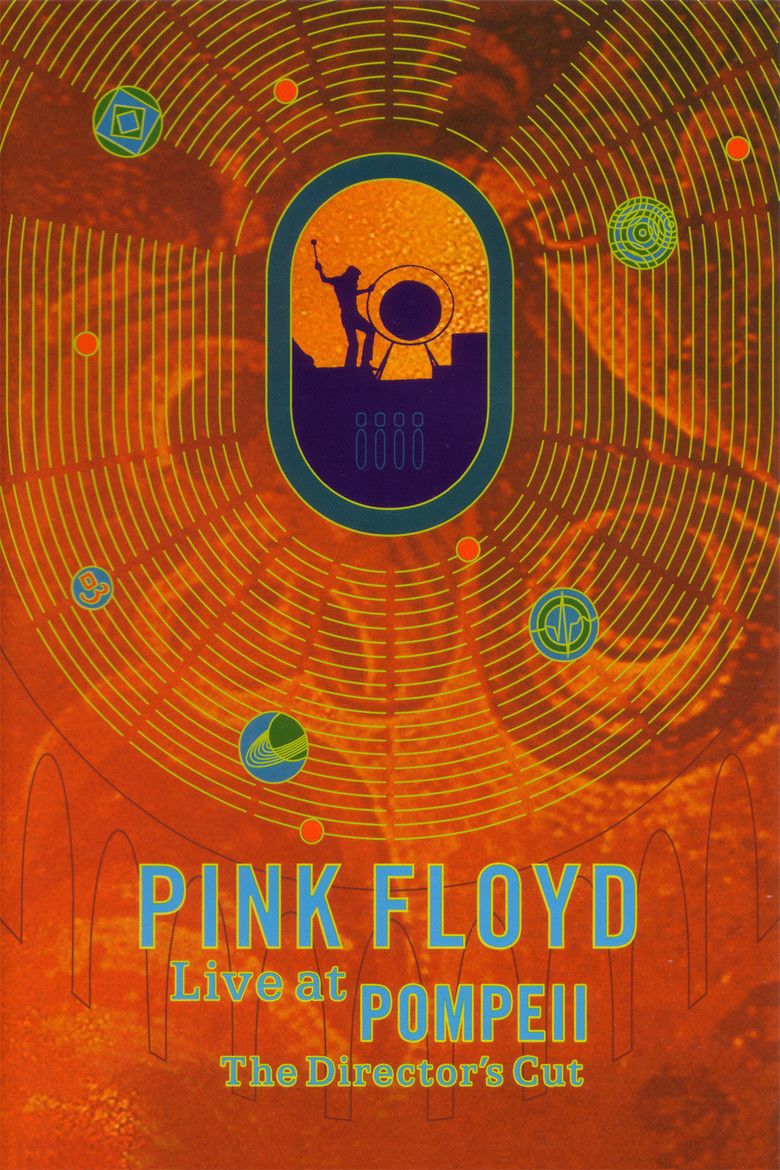 | ||||||||||||||||||||||||||||||||||
Release date September 1972 (1972-09) Genres Music, Documentary, Concert film Cast (Himself (bass, vocals)), (Himself (guitar, vocals)), (Himself (keyboards, vocals)), (Himself (drums)), (Themselves) Similar movies Evanescence: Anywhere But Home , Black Rebel Motorcycle Club: Live In Paris , Coldplay: Live 2003 , Garbage: MTV World Stage , Black Rebel Motorcycle Club: Live In London , Slayer: War At The Warfield | ||||||||||||||||||||||||||||||||||
Pink Floyd: Live at Pompeii is a 1972 concert documentary film directed by Adrian Maben and featuring the English rock group Pink Floyd performing at the ancient Roman amphitheatre in Pompeii, Italy. Although the band perform a typical live set from the era, there is no audience beyond the basic film crew.
Contents
- Background
- Pompeii
- Paris
- Release history
- Reception
- Outtakes
- 1972 original film
- 1974 theatrical version
- 2002 DVD
- 2016 51 Surround Sound version
- Credits
- Legacy
- References
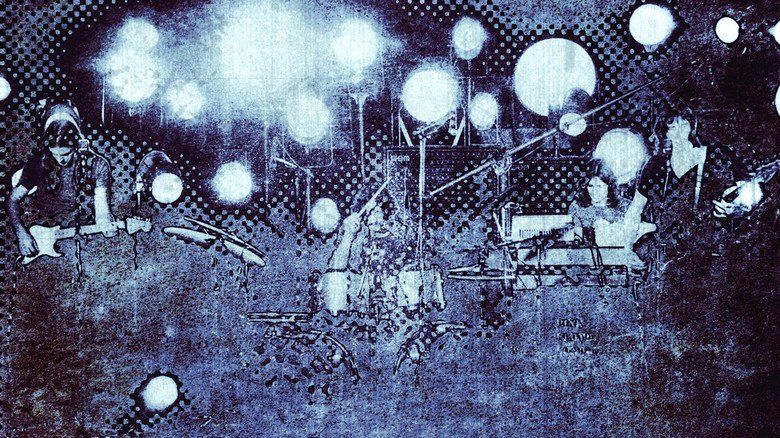
The main footage in and around the amphitheatre was filmed over four days in October 1971, using the band's regular touring equipment, including studio-quality 16-track tape recorders. Additional footage filmed in a Paris television studio the following December was added for the original 1972 release. The film was then re-released in 1974 with additional studio material of the band working on The Dark Side of the Moon, and interviews at Abbey Road Studios.
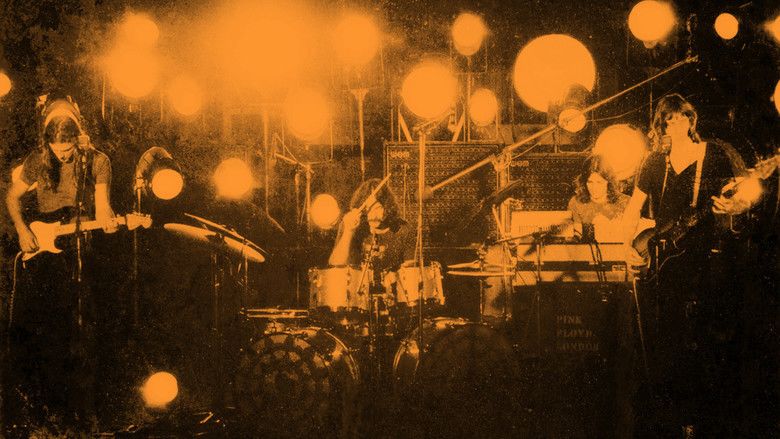
The film has subsequently been released on video numerous times, and in 2002 a Director's cut DVD appeared which combined the original footage from 1971 with more contemporary shots of space and the area around Pompeii, assembled by Maben. A number of bands have taken inspiration from the film in creating their own videos, or filming concerts without an audience.
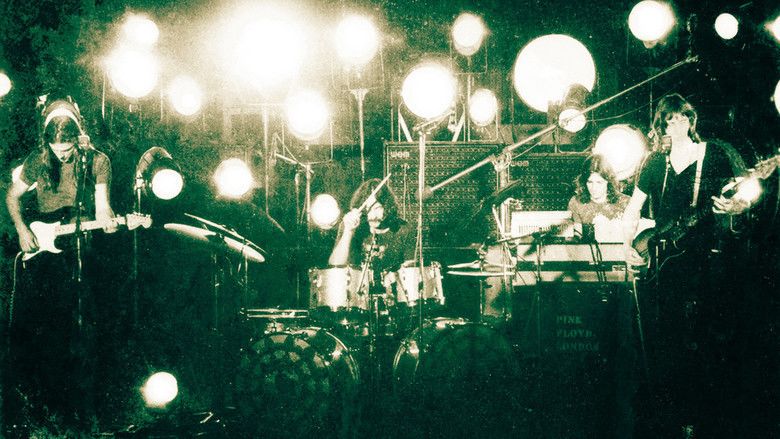
Background
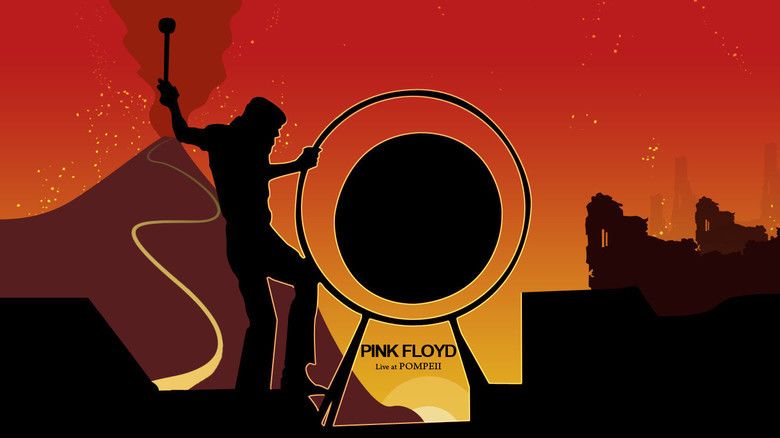
Pink Floyd had already experimented with filming outside the context of a standard rock concert, including an hour-long performance in KQED TV studios in April 1970. Adrian Maben had become interested in combining art with Pink Floyd's music, and during 1971, he attempted to contact the band's manager, Steve O'Rourke, to discuss the possibilities of making a film to achieve this aim. After his original plan of mixing the band with assorted paintings had been rejected, Maben went on holiday to Naples in the early summer.
During a visit to Pompeii, he lost his passport, and went back to the amphitheatre he had visited earlier in the day in order to find it. Walking around the deserted ruins, he thought the silence and natural ambient sounds present would make a good backdrop for the music. He also felt that filming the band without an audience would be a good reaction to earlier films such as Woodstock and Gimme Shelter, where the films paid equal attention to performers and spectators. One of Maben's contacts at the University of Naples, a professor who was a Pink Floyd fan, managed to persuade the local authorities to close the amphitheatre for six days that October for filming.
Pompeii
The performances of "Echoes", "A Saucerful of Secrets", and "One of These Days" were filmed from 4 to 7 October 1971. O'Rourke delivered a demo to Maben in order for him to prepare for the various shots required, which he finally managed to do the night before filming started. The choice of material was primarily the band's, but while Maben realised it was important to include material from the band's new album Meddle, he was also keen to include "Careful with That Axe, Eugene" and "A Saucerful of Secrets", as he felt they would be good numbers to film.
The band insisted on playing live, and brought their regular touring gear with them. Their roadie, Peter Watts, suggested that their 16-track recorder would produce a sound comparable to a studio recording. In addition, it transpired that the natural echo of the amphitheatre provided good acoustics for the recording.The equipment was carried by truck from London, and took three days to reach Pompeii. When it arrived, it was discovered there was insufficient power to drive the equipment correctly. This issue plagued filming for several days, and was finally resolved by running a lengthy cable from the local town hall.
The first section of footage to be filmed were montage shots of the band walking around Boscoreale, mixed with shots of volcanic mud, which can be seen at various points in "Echoes" and "Careful with That Axe, Eugene". For the live performances, the band recorded portions of the songs in sections, which were later spliced together. After each take, they listened to the playback on headphones. Maben closed all the entrances to the amphitheatre, but a few children managed to sneak in, and were allowed to watch the filming quietly from a distance.
Paris
The remaining songs were filmed in Studio Europasonor, Paris, from 13–20 December and can be distinguished by the absence of Richard Wright's beard. To fit in with the theme of the earlier work in Pompeii, the filming around Boscoreale, along with stock footage of waterfalls and lava and various shots of Roman mosaics and drawings from the Naples National Archaeological Museum were added into the Paris footage. Maben also filmed additional transflex footage for insertion into the Pompeii performances. While both the director and the band were disappointed with this footage, due to a lack of time and money, there was no alternative left but to use it.
During the filming in Paris, the band spontaneously suggested they would like to film a short blues with a howling dog, in the style of "Seamus" from Meddle. Maben knew Madonna Bouglione, daughter of circus director Joseph Bouglione, who was known to walk about Paris with a dog called Nobs. Accordingly, Nobs was invited into the studio, where the footage was filmed.
Maben subsequently did some of the editing of the final cut at home, due to financial constraints. He regretted doing this, as he felt it was important to separate his work and home life, but, at the time, he had no choice.
Release history
The original release, running for one hour, only featured the live footage. The film was scheduled for a special premiere at London's Rainbow Theatre, on 25 November 1972. It was cancelled at the last minute by the theatre's owner, Rank Strand as they didn't have a certificate from the British Board of Film Censors and the theatre could be seen to be in competition with established cinemas.
Maben was concerned that one of the problems with the film was that it was too short. In early 1973, Maben was fly fishing with Waters, and suggested the possibility of improving the film by watching them at work in a recording studio. Subsequently, Maben was invited with a small crew using a single 35 mm camera to Abbey Road Studios to film supposed recording sessions of The Dark Side of the Moon, as well as interviews conducted off-camera by Maben, and footage of the band eating and talking at the studio cafeteria. Maben was particularly happy about this footage, feeling it captured the spontaneous humour of the band. This version premiered on 21 August 1974, and ran for 80 minutes.
The film was not financially successful according to Mason, though Maben disagrees, and suffered particularly from being overshadowed by the release of The Dark Side of the Moon not long after the original theatrical showing. It was released on various home video formats several times.
A director's cut version of the film was released in 2002. It included all the original footage, including the interviews, along with some additional filming of the Apollo space program. It also includes the original one-hour cut as a bonus feature.
Reception
Maben was particularly pleased with positive reviews that came out of the film's showing at the Edinburgh International Film Festival, but was disappointed to hear one New York critic describe it "like the size of an ant crawling around the great treasures of Pompeii."
Billboard magazine was not enthusiastic about the 1974 re-release, thinking it looked dated, and stated that the film was "dull, unimaginative and hokey, and does not do justice to the Pink Floyd Vision". However, more recent reviews have been favourable. Billboard reviewed a video release in 1984, and on this occasion, Faye Zuckerman, while not particularly keen on the footage in the Abbey Road canteen, stated it was "vastly superior to most other concert movies". Reviewing the Director's Cut DVD, Richie Unterberger said the film had "first-rate cinematography" and was "undeniably impressive", while Peter Marsh, reviewing for the BBC, stated it was "my favourite concert film of all time", though his opinions of the new computer generated imagery were mixed.
Outtakes
Due to the lack of time in filming, no tracks were filmed that were unreleased, but several alternative shots and outtakes were held in the Archives du Film du Bois D'Arcy near Paris. At some point, an employee of the owners, MHF Productions, decided this footage was of no value and incinerated all 548 cans of the original 35 mm negatives. Maben was particularly frustrated about the lack of additional shots for "One of These Days," which is primarily a Mason solo-piece in the released version. Mason recalls the reason for that is that the reel of film featuring the other members was lost attempting to assemble the original cut.
1972 original film
- "Pompeii"
- "Echoes, Part 1"
- "Careful with That Axe, Eugene"
- "A Saucerful of Secrets"
- "One of These Days"
- "Set the Controls for the Heart of the Sun"
- "Mademoiselle Nobs"
- "Echoes, Part 2"
1974 theatrical version
- "Pompeii"
- "Echoes, Part 1"
- "On the Run" (studio footage)
- "Careful with That Axe, Eugene"
- "A Saucerful of Secrets"
- "Us and Them" (studio footage)
- "One of These Days"
- "Set the Controls for the Heart of the Sun"
- "Brain Damage" (studio footage)
- "Mademoiselle Nobs"
- "Echoes, Part 2"
2002 DVD
- "Echoes, Part 1"
- "Careful with That Axe, Eugene"
- "A Saucerful of Secrets"
- "Us and Them" (studio footage)
- "One of These Days"
- "Mademoiselle Nobs"
- "Brain Damage" (studio footage)
- "Set the Controls for the Heart of the Sun"
- "Echoes, Part 2"
2016 5.1 Surround Sound version
This version is only available as part of The Early Years 1965–1972 boxset or the smaller 1972 Obfusc/ation set.
- "Careful With That Axe, Eugene"
- "A Saucerful of Secrets"
- "One of These Days"
- "Set the Controls for the Heart of the Sun"
- "Echoes (Parts 1 & 2)"
Credits
As shown in the film.
Based on an idea and Directed by Adrian Maben
Legacy
The hip hop group the Beastie Boys made a music video for their song "Gratitude" that appears to be a homage to the film. Shot by David Perez in New Zealand, in addition to copying its directorial style of slow horizontal tracking shots, overhead shots of the drums, close up shots of the bass and multiple shots of guitar filling the screen, the video shows a number of speaker cabinets that the group managed to purchase, still labelled "Pink Floyd, London". The video ends with a message that reads, "This video is dedicated to the memory of all the people who died at Pompeii." The Beastie Boys claimed in interviews that the song and the video came about from their desire to progress from being a straightforward hip hop group and add vintage instruments and old sound equipment to their repertoire.
The rock band Korn filmed a similar show, Korn Live: The Encounter, in June 2010 to promote their ninth studio album, Korn III: Remember Who You Are. The show took place in a crop circle in Bakersfield, California, and had no audience beyond the crew workers.
Radiohead were noted for being fans of the film and regularly watched it when on tour. According to bassist Colin Greenwood, his brother Jonny made the whole band watch the film, saying "now this is how we should do videos," Colin, however was critical of the direction, which he described as "Dave Gilmour sitting on his arse playing guitar and Roger Waters with long greasy hair, sandals and dusty flares, staggers over and picks up this big beater and whacks this gong. Ridiculous."
In July 2016, Gilmour returned to the amphitheatre where the filming took place and performed two live concerts, this time with an audience. While there, he was named an honorary citizen of Pompeii.
References
Pink Floyd: Live at Pompeii WikipediaPink Floyd: Live at Pompeii IMDbPink Floyd: Live at Pompeii Rotten TomatoesPink Floyd: Live at Pompeii themoviedb.org
